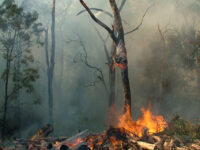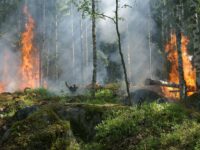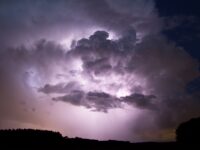We as humans must serve as protection where resources are scarce, populations are threatened, and where there lacks necessary keys to survival. Climate change is deteriorating habitats and creating unlivable conditions for aquatic ecosystems. People fight against climate change to defend and conserve these natural environments. We want to save the earth! However, this is not a “one size fits all” effort. The Redband rainbow trout species travel between habitats to survive, taking in nutrients in one place and reproducing in the other. Inhabiting bodies of water from lakes to streams, Great Basin redband trout, a population of redband rainbow trout, are found on the west coast of the United States. They need multiple habitats because higher temperature waters create food for the fish and cooler temperature waters act as safe breeding grounds. While some fish species need only one habitat with year-round temperature conditions that are suitable enough for survival, species with unique life plans like mobile fish require different conservation efforts.
We want to save the earth! However, this is not a “one size fits all” effort.
Redband rainbow trout are a mobile fish species that range from California to British Columbia, populating lakes, streams, and the ocean. This excludes them from many conservation efforts. Climate adaptation planning considers habitats for refugia, or an area that allows organisms to survive through harsh environmental conditions, as the climate warms. Mobile fish take advantage of differing temperatures, so adding refugia exclusively in cooler regions to match with global warming patterns will not support this fish’s life plan. Redband rainbow trout are unique as a mobile coldwater species because they utilize multiple habitats annually rather than one. For other fish that stay in one habitat, though, conservation efforts often focus on cooler habitats during summer conditions for refugia, steering away from preserving seasonally warm habitats that can be beneficial to mobile fish. So, factoring in migration into conservation efforts has become a particular challenge.
Mobile fish take advantage of differing temperatures, so adding refugia exclusively in cooler regions to match with global warming patterns will not support this fish’s life plan.
Great Basin redband trout, a population of redband rainbow trout population complete a biannual migration to and from Upper Klamath Lake, Oregon. With temperatures above 25 degrees Celsius, summer conditions are unbearable for coldwater fish. So, the trout find refuge in cooler tributaries or springs, waiting for summer to end. When it does, the lingering warm waters turn into scavenging grounds. In the fall, trout start their voyage to Upper Klamath Lake to forage. They are welcomed with an abundance of nutritious growth formed in the hot waters of summer. The lake becomes their feeding grounds, where the trout indulge on smaller fishes that have survived the warmer temperatures since they need less oxygen. The trout can benefit from the lake productivity leftover from summer. The forage rejuvenates them, and they then migrate back to cooler tributaries with fuel for their winter spawning in the cooler waters. This voyage is completed again in the spring season before summer comes. The trout must gather energy so they can make it through the summer.
It is currently seasonally hot, but if seasonal becomes a year-round occurrence, trout will lose their incentive to migrate to the lake to feed and gather energy for spawning, depleting their population.
Warm waters are essential for migratory fishes, but climate adaptation planning devalues the importance of warm habitats as a refuge for coldwater fish. As water temperatures rise, coldwater habitats are prioritized for adaptation planning because they are below the fish’s peak temperature. What about warm water habitats? They provide trout with energy to sustain themselves. With climate change causing even warmer waters, not even the smaller fish that trout feed on would survive in such diminished oxygen. Conservation efforts that identify refugia protect populations from environmental threats. Upper Klamath Lake is overlooked as a potential refugia because it already meets stressful temperatures in the summer season; what needs to be considered is its crucial resources for mobile fish who find their energy in the warm waters. It is currently seasonally hot, but if seasonal becomes a year-round occurrence, trout will lose their incentive to migrate to the lake to feed and gather energy for spawning, depleting their population.
As climate change continues to negatively alter aquatic ecosystems, it is important to include the warm water habitats that are affected as well. It is intuitive to focus on cool water habitats where temperatures are lower and can be utilized as a refuge, but this excludes other species, like redband rainbow trout, and factors, like temperature, that complement their needs.
Conservation Biology (2021). DOI: https://doi.org/10.1111/cobi.13857






